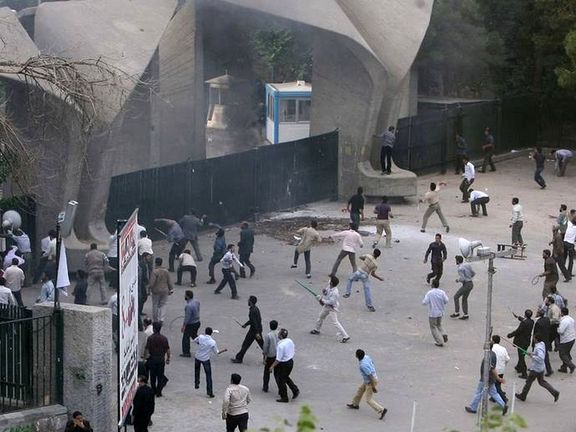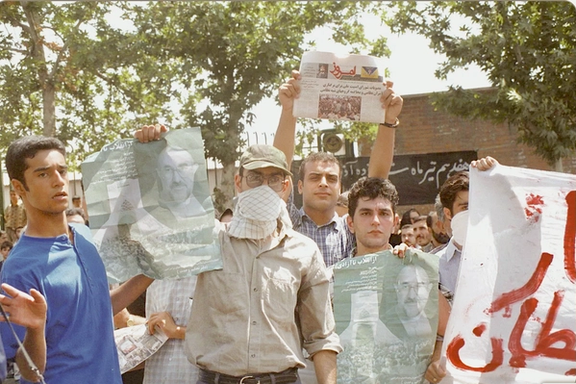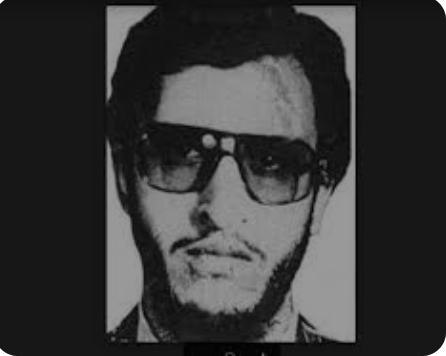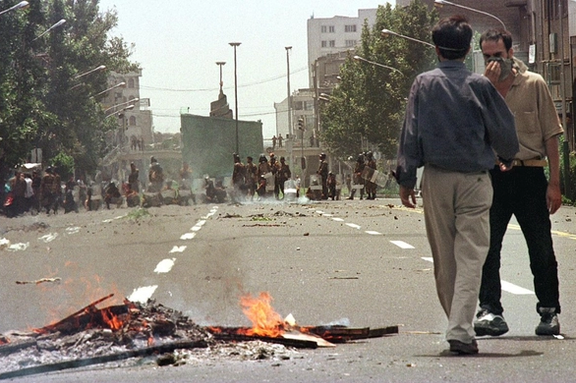Iranians Mark 24th Anniversary Of Student Protests, Amid New Repression

Iranians marked the 24th anniversary of a brutal attack on Tehran University students by vigilantes and security forces, which sparked widespread protests in July 1999.

Iranians marked the 24th anniversary of a brutal attack on Tehran University students by vigilantes and security forces, which sparked widespread protests in July 1999.
On social media, many Iranians paid tribute to the students who lost their lives, were disabled, or went missing during the demonstrations.
Activist Masih Alinejad, based in the US, tweeted about the anniversary, stating, "Today is the anniversary...of the day when the regime attacked [the campus of Tehran] University to silence [anti-government] protests for good and to give students a lesson."
She further emphasized that despite years of repression, the students' struggle for freedom remains stronger than ever.

Iranian students also played a significant role in the 2022 and 2023 protests triggered by the death of Mahsa Amini, a young woman who died in the custody of the morality police in September 2022. In response, the regime has tightened its control over universities to suppress further protests and defiance of its hijab rules.
According to student sources, the Supreme National Security Council (SNSC) has recently granted extraordinary powers to university authorities and security forces to monitor and control students and professors. These powers include the ability to suspend students and even withhold salaries from professors who are critical of the government.
The student protests in July 1999 took place during the presidency of reformist Mohammad Khatami and were in response to the closure of the reformist newspaper, Salam. These protests were among the largest in the history of the Islamic Republic and were violently suppressed by authorities.
Salam newspaper had been ordered to shut down by the judiciary for publishing a classified letter from Saeed Emami, a former deputy intelligence minister, to the intelligence minister. In the letter, Emami called for increased media control and censorship.

Prior to the publication of the letter, Emami died suspiciously in prison, where he was being held for his alleged involvement in the chain murders of dissident intellectuals, activists, and artists between 1988 and 1998.
The incident at the university campus, commonly referred to as the "Ku-ye Daneshgah Calamity," took place in the early hours of July 9. Armed plainclothes agents, Revolutionary Guards (IRGC) Basij militia, and hardliner vigilantes raided students' dormitories, attacking them indiscriminately.
Students were beaten, thrown down stairs or out of windows, and their belongings, including computers, were destroyed. Many students suffered broken limbs, and some were blinded. One student, Ezzat Ebrahim-Nejad, was fatally shot during the raid.
In the following days, tens of thousands of people took to the streets of Tehran and other cities to protest against the brutal attack on the students. The protests escalated into riots in some areas, leading to three more deaths and hundreds of injuries.

Security forces arrested over a thousand protesters during and after the demonstrations. Saeed Zeinali, one of the detainees, disappeared after briefly contacting his family and was never heard from again. Another young man, Akbar Mohammadi, was tortured to death in prison in 2006, several years after his arrest and death sentence. Mohsen Jamali, a top medical student, lost an eye during the raid when he was hit by a gas canister.
Despite the atrocities committed, Iran's judiciary only put a few low-ranking soldiers on trial and sentenced a conscripted soldier to three months in prison and a fine for stealing a shaving machine during the raid. All other individuals responsible for the attack were acquitted of all charges.